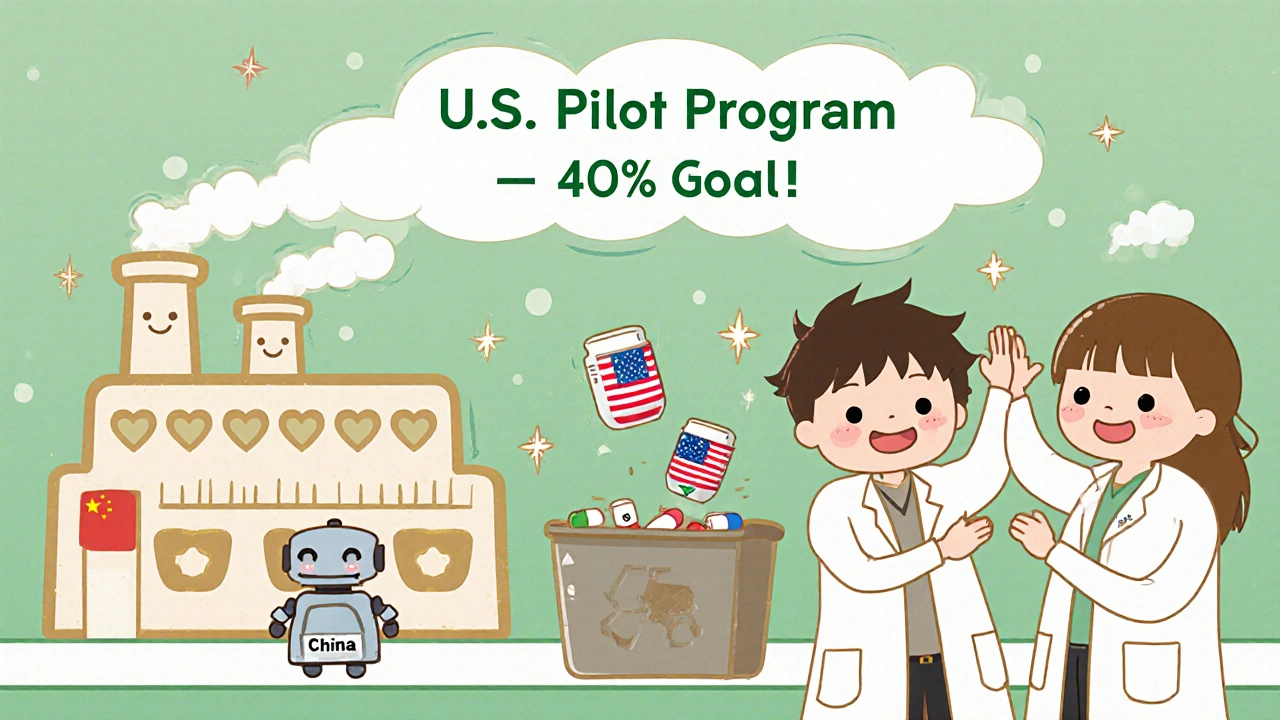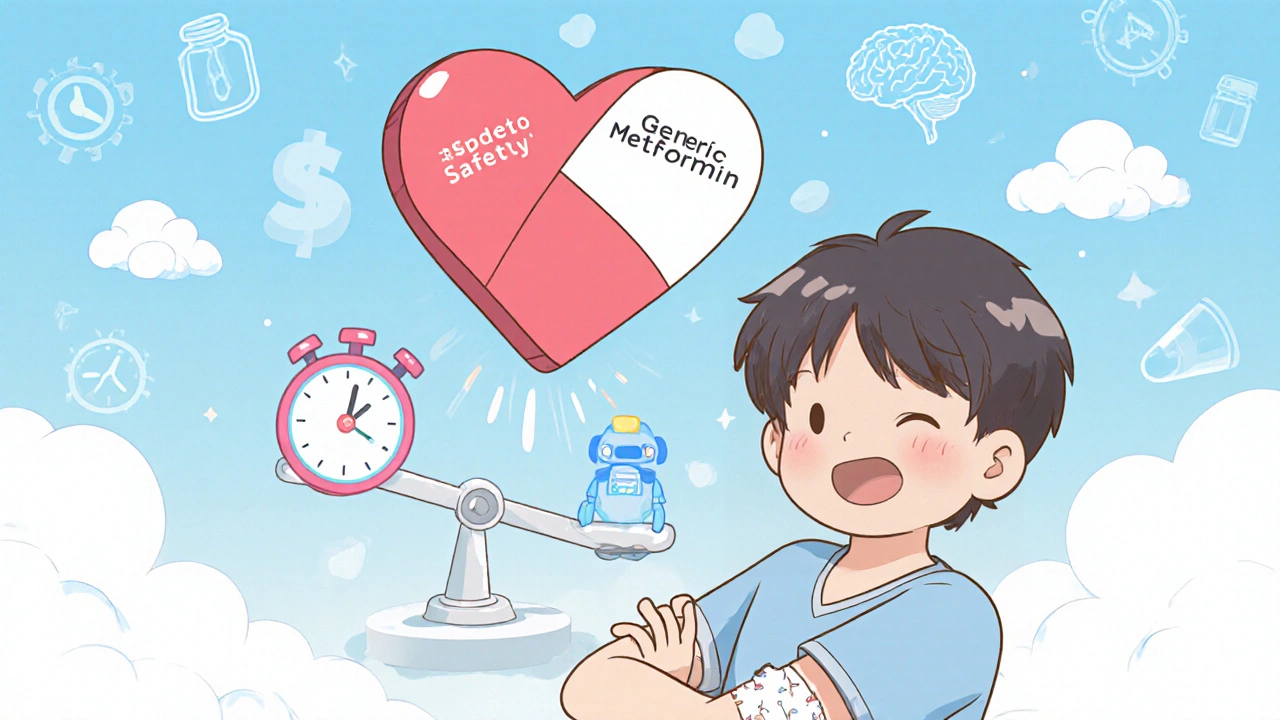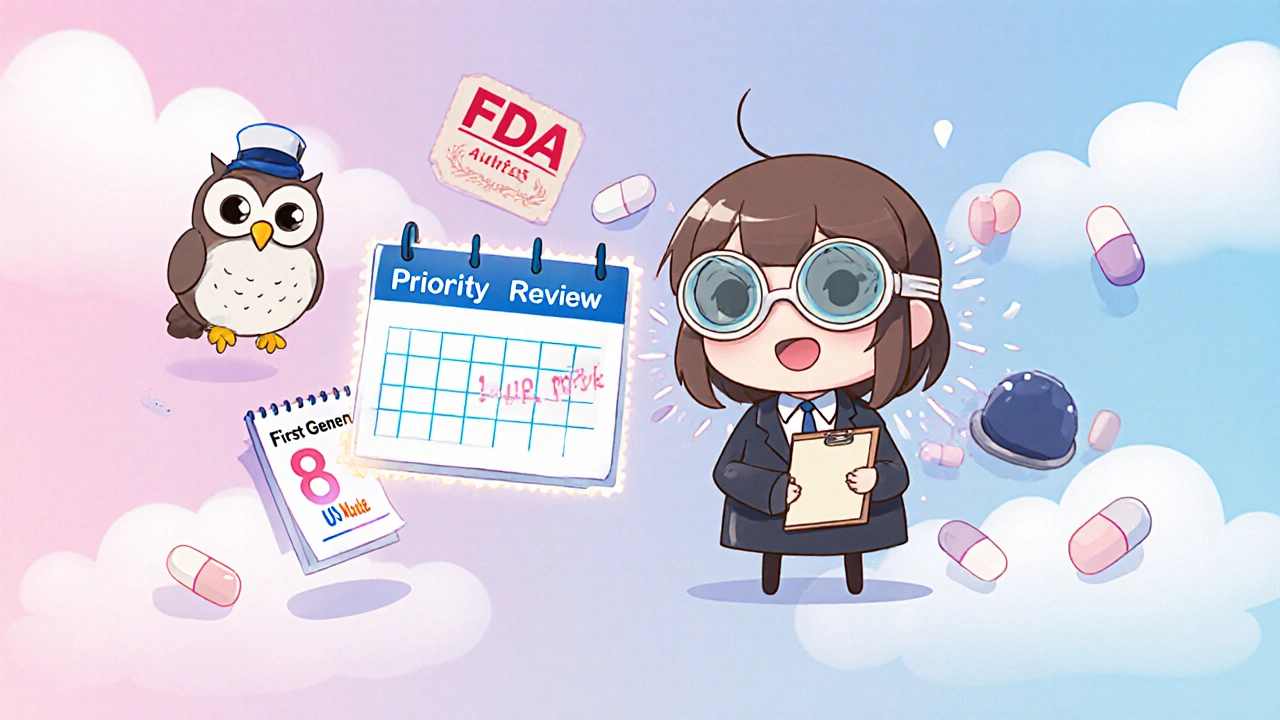The U.S. Food and Drug Administration (FDA) doesn’t treat every generic drug application the same. Two paths exist: priority review and standard review. These aren’t just bureaucratic labels-they determine how fast a life-saving, affordable medication reaches patients. For generic drug makers, getting priority review can mean millions in extra revenue and a competitive edge. For patients, it can mean faster access to drugs during shortages or when no generic alternative exists. Understanding how the FDA decides who gets priority is key to grasping how the generic drug market actually works.
What’s the Difference Between Priority and Standard Review?
The core difference is time. Standard review gives the FDA 10 months to complete its evaluation of an Abbreviated New Drug Application (ANDA). Priority review cuts that down to 8 months. That two-month gap might seem small, but in pharma, it’s huge. A drug approved two months earlier can capture the entire first-generic market before competitors even file. That’s often worth hundreds of millions in sales. This timeline comes from the Generic Drug User Fee Amendments (GDUFA) III, which took effect in October 2022 and runs through 2027. It replaced older rules and tightened accountability. The FDA publishes performance data yearly. In fiscal year 2022, 83.1% of priority review applications met the 8-month deadline. For standard review, it was 72.3%. The gap shows the system works-but not perfectly. Many applications get delayed because they’re incomplete or have technical flaws.Who Gets Priority Review?
Not every generic drug qualifies. The FDA only grants priority review to applications that meet specific, strict criteria. There are three main categories:- First generics: The first company to submit a complete ANDA for a brand-name drug after its patents and exclusivity expire. These are the most valuable. About 92.7% of first generics get 180 days of market exclusivity, meaning no other generic can enter during that time.
- Drugs in shortage: If the FDA has officially declared a drug shortage under Section 506C of the Federal Food, Drug, and Cosmetic Act, any ANDA for that drug gets priority review. This is critical for drugs like antibiotics, insulin, or chemotherapy agents where supply issues can be life-threatening.
- Medically important advances: If a generic version offers a meaningful improvement over existing ones-like better stability, easier dosing, or fewer side effects-it may qualify. This is rare and requires strong scientific justification.

The New U.S. Manufacturing Pilot Program
In October 2023, the FDA launched a game-changing initiative: the ANDA Prioritization Pilot Program. This adds a new layer to priority review. To qualify, applicants must prove three things:- The bioequivalence studies were done in the United States.
- The finished dosage form (the pill or injection you take) is manufactured in the U.S.
- All active pharmaceutical ingredients (APIs) come from U.S.-based suppliers.
Why Most Applications Get Rejected or Delayed
Even if you qualify for priority review, you’re not guaranteed approval. The FDA’s 2022 data showed 31.7% of ANDAs received a Complete Response Letter (CRL)-essentially, a “not approved yet” notice. The biggest reason? Chemistry, Manufacturing, and Controls (CMC) issues. That means problems with how the drug is made: impurity levels, tablet hardness, dissolution rates, or packaging stability. The average ANDA goes through 1.7 review cycles before approval. Each cycle adds about 4.2 months to the timeline. That can turn an 8-month priority review into a 15-month nightmare. To fix this, the FDA started the Complex Generic Drug Product Pilot Program in January 2023. It gives early scientific feedback to companies making tricky products like inhalers, topical creams, or extended-release pills. These account for nearly 20% of pending applications but only 10% of approvals. Companies using this pilot now have a 38.7% first-cycle approval rate-up from 24.1% in 2020. Pre-submission meetings are now used by 63% of sponsors, compared to 41% just three years ago.
Market Impact and Future Trends
The U.S. generic drug market hit $128.7 billion in 2022. It fills 88.6% of all prescriptions but costs only 15.3% of total spending. That’s why competition is fierce. In 2022, the FDA approved 1,132 generic products-a 17.3% jump from the year before. Priority review applications grew twice as fast as standard ones. But there’s a bottleneck: the average time from patent expiration to first generic approval is still 2.7 years. Much of that delay comes from patent lawsuits and regulatory hurdles. The new pilot programs aim to shrink that gap. The FDA expects to accelerate review of 45 to 60 ANDAs annually through the U.S. manufacturing pilot alone. Looking ahead, the FDA is testing AI tools to speed up review. In internal tests, AI reduced review times for simple applications by 18.7%. If rolled out widely, this could shave months off the process. Industry analysts predict generic drugs could enter the market 4.3 months faster by 2026-potentially saving the U.S. healthcare system $18.7 billion a year.What This Means for Patients and Providers
For patients, this system means more affordable options-but not always faster access. If you need a drug that’s in shortage, priority review helps. If you need a common pill like metformin, you’ll likely get it under standard review, just a few months later. The real winners are companies that plan ahead: they invest in U.S. manufacturing, run early studies, and work with the FDA before filing. For doctors and pharmacists, it’s about knowing what’s coming. When a first generic hits the market, it can drop prices by 80% or more. Understanding which drugs are likely to get priority review helps anticipate these changes. The FDA’s system isn’t perfect. It’s complex, competitive, and sometimes slow. But it’s designed to balance speed with safety. And as more companies adapt to the new rules, the system is becoming more responsive-to both patient needs and national supply chain concerns.What’s the difference between priority review and standard review for generic drugs?
Priority review gives the FDA 8 months to approve a generic drug application, while standard review allows 10 months. Priority review is reserved for first generics, drugs in shortage, or products with a meaningful medical advantage. Standard review applies to all other generic applications.
How does the FDA decide which generic drugs get priority review?
The FDA grants priority review to applications that meet one of three criteria: (1) the drug is the first generic version after patent expiration, (2) the drug is on the FDA’s official shortage list, or (3) the generic version offers a significant medical improvement over existing options. Documentation must prove eligibility, especially for first generics using the Orange Book database.
What is the U.S. manufacturing pilot program for generic drugs?
Launched in October 2023, this pilot gives priority review to ANDAs that use U.S.-based active ingredients, U.S. manufacturing for the final dosage form, and U.S.-conducted bioequivalence studies. It’s part of a broader effort to reduce reliance on overseas supply chains and improve drug security. Only about 12.3% of companies currently meet all three requirements.
Why do most generic drug applications get delayed or rejected?
The most common reason is Chemistry, Manufacturing, and Controls (CMC) issues-problems with how the drug is made, such as impurity levels, tablet stability, or dissolution rates. About 31.7% of applications receive a Complete Response Letter. Each review cycle adds about 4.2 months to the timeline. Pre-submission meetings with the FDA have helped reduce these delays.
How long does it take on average to get a generic drug approved after a patent expires?
On average, it takes 2.7 years from patent expiration to first generic approval. Delays come from patent litigation, regulatory hurdles, and application deficiencies. Even with priority review, companies often need multiple submission cycles to get approval, especially for complex drugs.
Will AI speed up FDA approval for generic drugs?
Yes. The FDA is testing AI tools to automate parts of the review process for straightforward applications. In internal tests, AI reduced review times by 18.7%. If fully implemented, this could cut months off the timeline by 2026. AI won’t replace human reviewers but will help flag issues faster and handle routine checks.

 Nov, 20 2025
Nov, 20 2025

Erika Sta. Maria
November 20, 2025 AT 15:48so like... if a drug is made in india but the pill is pressed in pennsylvania, does that count? because i swear i saw a bottle that said 'manufactured in usa' but the little print said 'active ingredient sourced from hyderabad' and i just... i don't know anymore. we're all just pawns in a giant pharma chess game. 🤷♀️
Debanjan Banerjee
November 21, 2025 AT 22:24Actually, the FDA’s U.S. manufacturing pilot requires ALL THREE criteria: U.S.-conducted bioequivalence studies, U.S. manufacturing of the final dosage form, AND U.S.-sourced APIs. Mixing sourcing locations invalidates eligibility. The 12.3% figure is accurate - most firms lack vertical integration. Even major players like Teva outsource APIs to avoid capital expenditure. This isn’t about patriotism - it’s about supply chain resilience. If you’re not investing in domestic API production, you’re betting on geopolitical stability.
Steve Harris
November 22, 2025 AT 22:01Thanks for laying this out so clearly. I work in hospital pharmacy and we see the impact every day - when a first generic hits, prices drop overnight and patients finally get their meds without insurance battles. The pilot program is a smart move, but it’s going to take years to scale. Maybe we need tax incentives for U.S.-based API plants? Right now, it’s cheaper to ship a ton of powder from India than to build a lab in Ohio.
Darragh McNulty
November 24, 2025 AT 21:41Wow. This is wild. 🤯 I had no idea the FDA had this much control over who gets to make generics. And the U.S. manufacturing push? That’s actually kinda cool. Like, we’re not just buying drugs - we’re buying security. 💪🇺🇸
Paula Jane Butterfield
November 25, 2025 AT 01:02soooo... i just read this whole thing and i'm crying. not because it's sad, but because i finally understand why my insulin cost $450 last year and now it's $35. it's not magic. it's paperwork. and someone filed it right. and someone else made sure the pills didn't crumble. i'm so grateful to the people who do this. thank you.
Simone Wood
November 26, 2025 AT 10:49Let me get this straight - the FDA is now playing corporate nanny by forcing companies to make drugs in the U.S. because of a pandemic that ended three years ago? And we’re supposed to believe that 40% domestic API production is realistic? Please. The entire global supply chain is a patchwork of corruption, subsidies, and sweatshops. You think the U.S. can suddenly outproduce India and China in API manufacturing without trillions in subsidies? Wake up. This isn’t innovation - it’s protectionism with a PR team.
Swati Jain
November 27, 2025 AT 06:16ohhhh so THAT’S why my metformin suddenly became 80% cheaper last month?? 😏 the first generic hit and boom - the brand got wrecked. i love it. also, ‘medically important advances’? like… a pill that doesn’t give me diarrhea? yes please. the FDA should give priority review to every generic that doesn’t make you feel like you swallowed a brick. 🙌
Florian Moser
November 28, 2025 AT 11:03This is actually one of the most hopeful things I’ve read about healthcare in years. The FDA’s pilot programs are quietly fixing systemic problems without fanfare. It’s not sexy, but it’s real. And the fact that pre-submission meetings are now used by 63% of sponsors? That’s progress. We need more of this - collaboration over confrontation. Keep pushing, FDA. You’re doing good work.
jim cerqua
November 29, 2025 AT 19:02Let’s be real - this whole system is a rigged casino. The companies that can afford $2M in regulatory consultants, U.S. labs, and FDA lobbyists are the only ones who win. The rest? They get stuck in CRL purgatory for 18 months while the first-mover banks $300M. And don’t get me started on how ‘first generic’ is defined - one typo in Form 356h and you’re out. It’s not about patient access. It’s about who can afford to play the game. And guess what? The little guys? They’re already dead.
Donald Frantz
November 29, 2025 AT 23:47AI reducing review times by 18.7%? That’s impressive, but what’s the false positive rate? If AI flags a dissolution issue that doesn’t exist, you delay a life-saving drug. If it misses a toxic impurity, you kill someone. The FDA can’t outsource safety to an algorithm. AI should assist - not decide. We need transparency in how these models are trained. Otherwise, we’re trading speed for risk.
Sammy Williams
December 1, 2025 AT 12:55So if I’m a small startup and I want to make a generic for a drug in shortage, I gotta do all my testing in the U.S., make the pill here, AND get my API from here? That’s gonna cost me $5M. But if I just ship everything from India, I can do it for $800K. The FDA’s trying to fix a supply chain problem… by making it impossible for anyone but big pharma to play. That’s not fixing it. That’s locking the door.